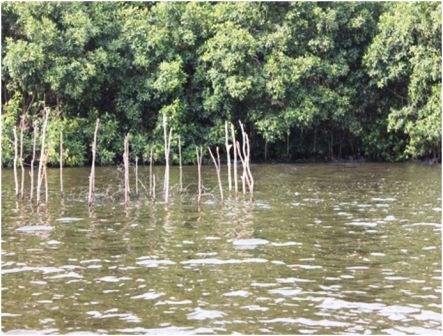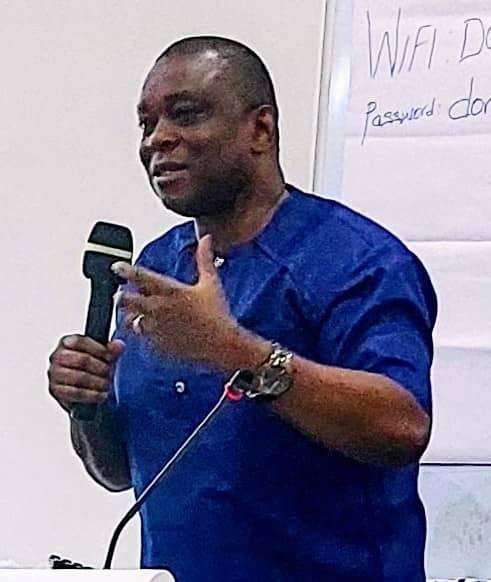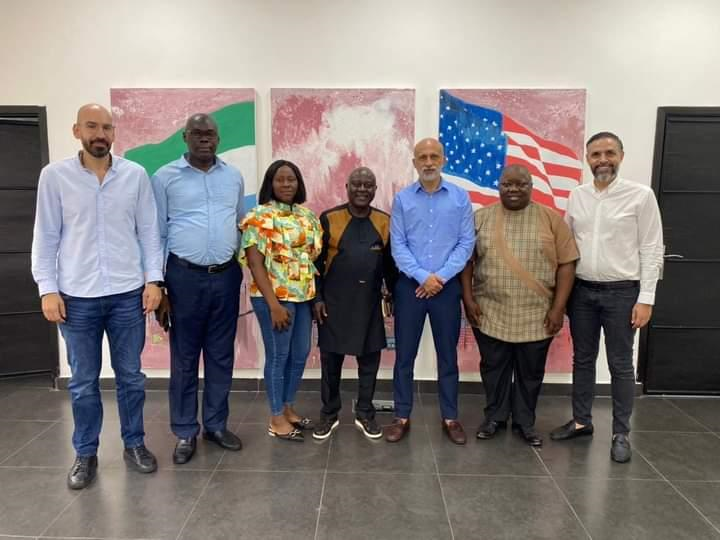Nigeria Vows to Support Abidjan Convention’s Mangrove Protocol
CALABAR, Nigeria 29 July 2015 – Nigeria will lend its total support to programmes and activities that can improve the environment and lives of the coastal communities, Halima Bawa-Bwari, the Abidjan Convention National Focal Point at the Federal Ministry of Environment, has said.
“The Federal Government will always show commitment to all programmes that will enable sustainable development,” she in a statement delivered at a panel of experts’ meeting on mangroves organized by the Abidjan Convention Secretariat.
Her statement was read by Joyce Kitakang, the Guinea Current Large Marine Ecosystem desk officer at the ministry.
This is the panel’s second meeting to refine a West African mangrove charter to become an additional protocol to the Abidjan Convention, a legal entity concerning 22 countries from Mauritania to the western seaboard of South Africa.
The three-day meeting began Monday in the south-eastern coastal city of Calabar to validate the protocol. Then, it will be sent to Convention member states for final revision before being tabled for adoption at the next Conference of Parties to the Convention.
Alarmed at the rising threats to mangroves in the Convention area, its marine scientists have been increasing their calls for the sustainable management of this highly-valued ecosystem. The threats have come from a number of sources. These include land-based settlement activities; cutting of mangroves for cooking wood and construction; industrial, agricultural, urban and domestic sewage run-off; as well as oil and exploration and drilling.
“Arising from these, our living resources are being depleted, the status of our ecosystem is uncertain; water quality is deteriorating and habitats are being lost,” Bawa-Bwari said.
Location
Mangroves are a vital ecosystem that lessen wave energy and heights slamming against shores, and thus shield coastal areas, assets and settlements from storm surge water levels and flooding. They also hold considerable economic value.
Most mangroves in the Convention area are in the West and Central Atlantic coastline; some are also along the fringes of inland waterways. Nigeria has Africa’s largest mangrove system and the third largest in the world. A United Nations Environment Programme report says most of the mangroves are “between the region of the Benin River in the west and the Calabar, Rio del Rey Estuary in the east”. All eight species of mangroves in West Africa are found in Nigeria which, Bawa-Bwari said, covered at least 10,000 square kilometres in the Niger Delta.
Once Pristine, Now Degraded
The delta was once a pristine mangrove forest. However, this is no more, according to Abere, S.A and Ekeke B.A. in Nigerian Mangrove and Wildlife Development.
They say that the delta has been dredged and that vegetation has been cleared to cut navigation canals and access to sand fills. Dredging removes soil, sediment and vegetation from one location and dumps it in another, thereby smothering the aerial roots of the mangroves at the fringe. This, they say, has led to the alteration of the surface topography and hydrology, acidification and water contamination. The result has been vegetation damage and dead fish. “Consequently, former mangrove areas have been converted to bare earth, grassland or freshwater forest after several years of natural weathering,” they say in their publication.
Dredging on mangrove they say also affects “almost all the various components of the ecosystems”, including the mangrove vegetation, benthic invertebrates, fisheries, plankton, wildlife, soil, sediment and water quality and ultimately the poor people who depend directly on the rich biodiversity of the mangrove ecosystem. Furthermore, the authors say, abandoned sulphidic (a compound with a positive electric charge) from dredged spoils is dumped along canal banks leading to “extreme acidification, heavy metal pollution, and general habitat degradation, which prevent the re-colonization of the sites by native species”.
Nypa Palm
The Nypa Palm, an invasive species, has also been strangling Nigeria’s native mangroves. The federal government initiated various Nypa palm control and mangrove restoration programmes in 2001. Current efforts are directed at raising awareness on the need to save and restore the mangroves by using, rather than trying to kill, the Nypa palm. Bawa-Bwari said efforts had shifted from control through destruction, to control through utilization.
Stay with Sierra Express Media, for your trusted place in news!
© 2015, https:. All rights reserved.






